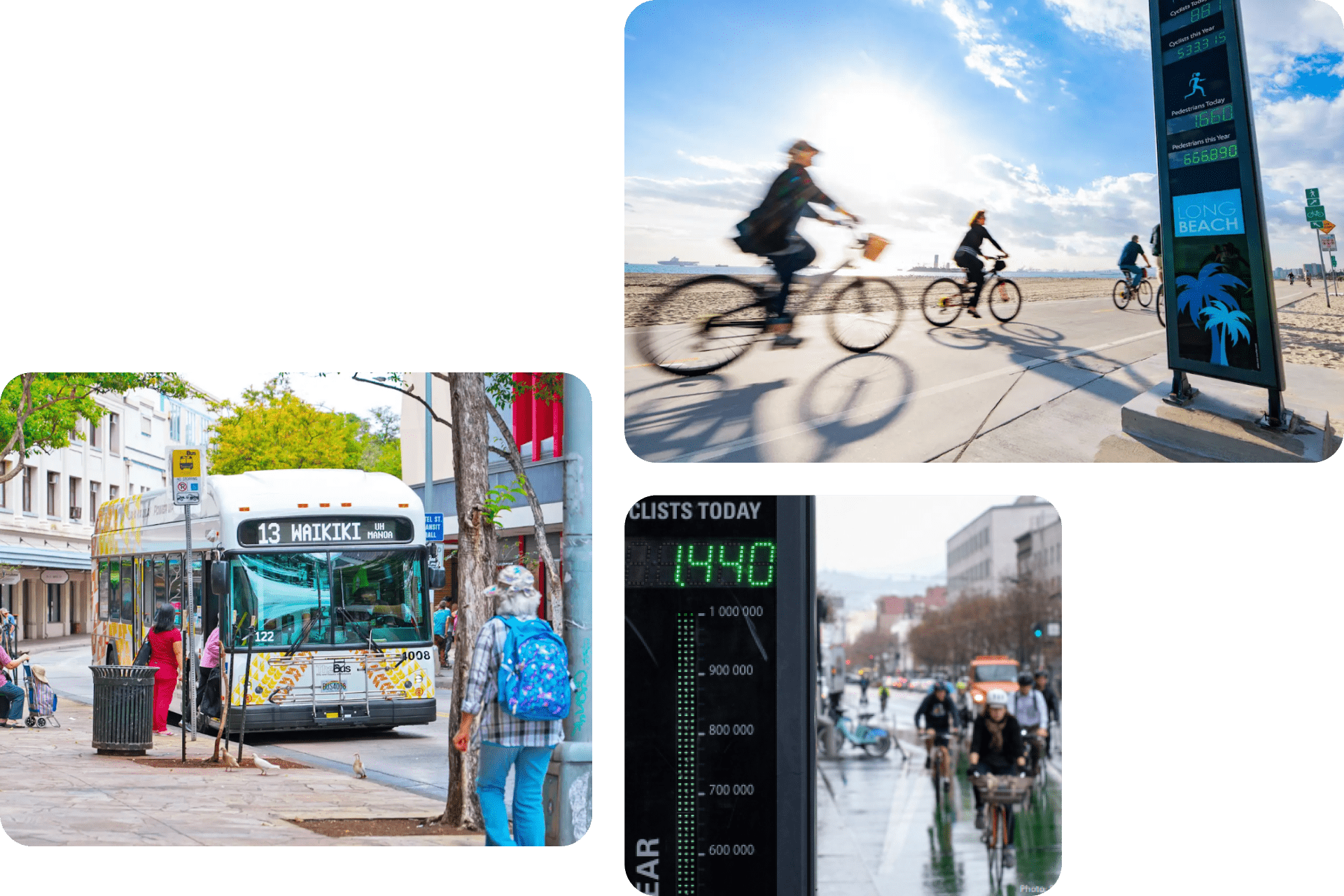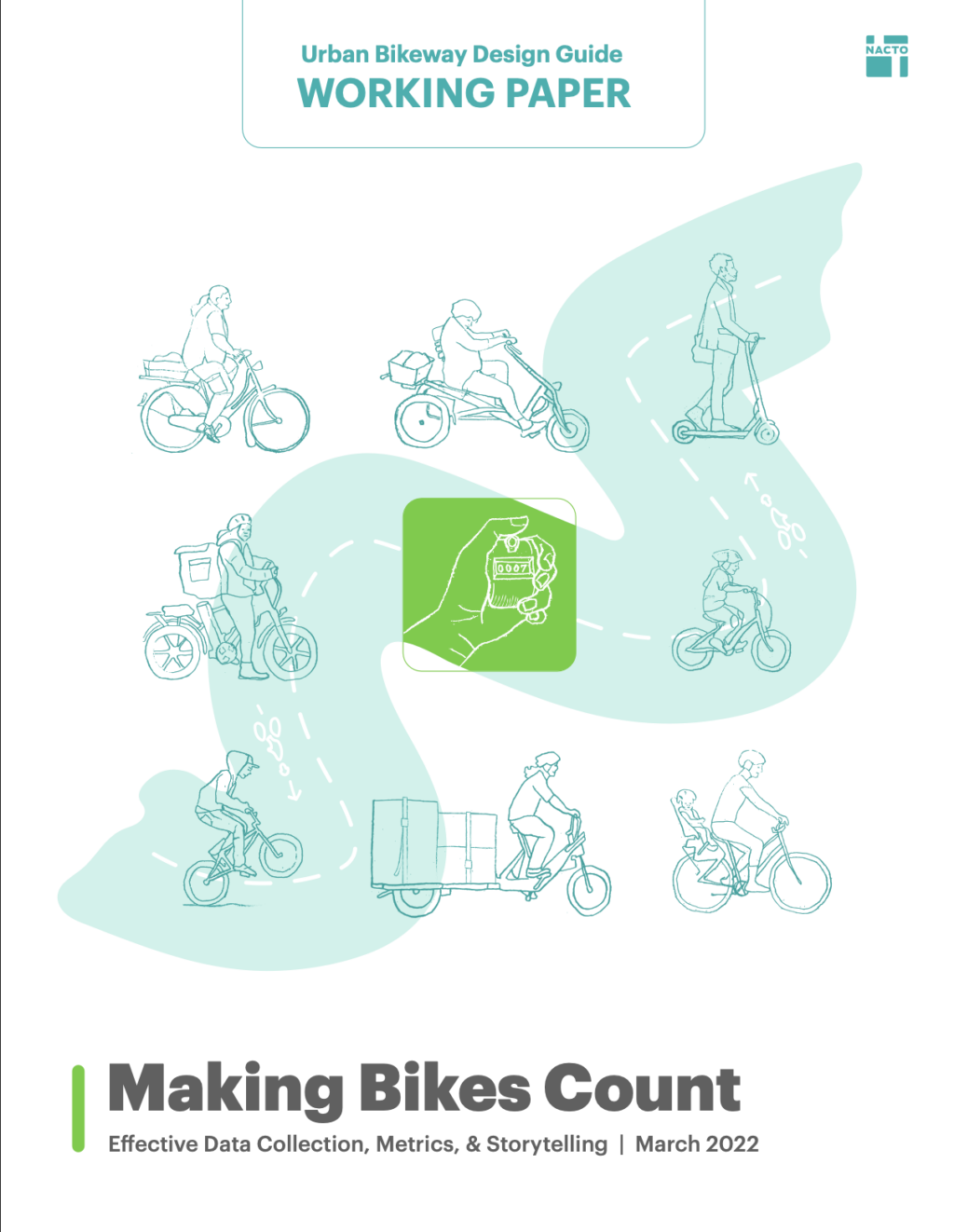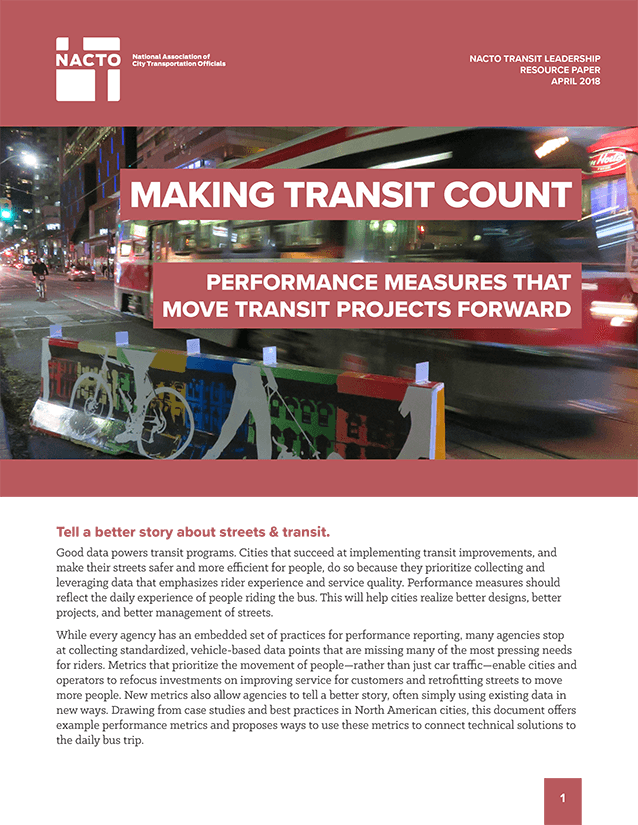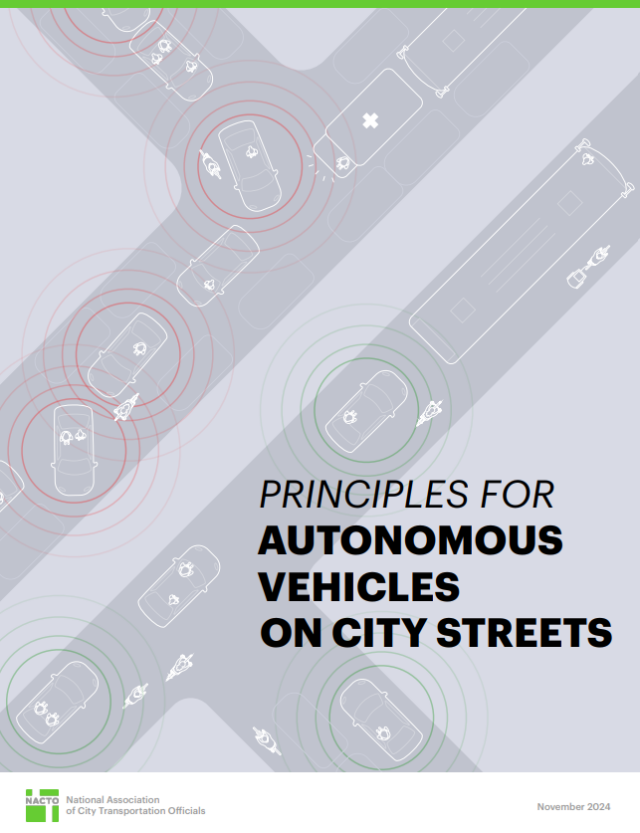NACTO supports cities by teaching the skills necessary for establishing multimodal data collection, running appropriate analyses, and telling compelling stories.
In transportation and street design, “what gets counted, counts”. Across North America, billions of dollars are spent designing roads based on car traffic counts, with simple industry-wide practices that nearly every city and state transportation department is familiar with. Historically, this same rigor was not applied to data on people walking, biking, rolling, or taking transit.
NACTO helps cities and transit agencies tell a more complete and compelling story about their streets. We share guidance on new ways to measure and report on data and help cities learn new skills from each other.
Keys for multimodal performance measures:
- Use data to tell a story: To communicate project successes, cities should pair data reporting with storytelling about why the data matters to residents. Numbers are not enough by themselves–they must be contextualized within a larger story about a city’s mobility goals.
- Performance measures should reflect an agency’s values and measure progress on the goals of a program. Measuring what matters will vary by project, and may include travel time reliability, speeding, crash and fatality rates, people traveling by mode, and network connections.
- Agencies should operationalize data collection into their work, including regularly collecting “before” data for projects. Before-and-after comparisons demonstrate improvements associated with a project. Identifying key performance measures early will help define a “before” data collection strategy.
- Transparency builds trust. Cities often share the behind-the-scenes on data collection methods, outputs, and analysis. Doing so also to builds support for more data collection, analysis, and projects that move the needle on street design.
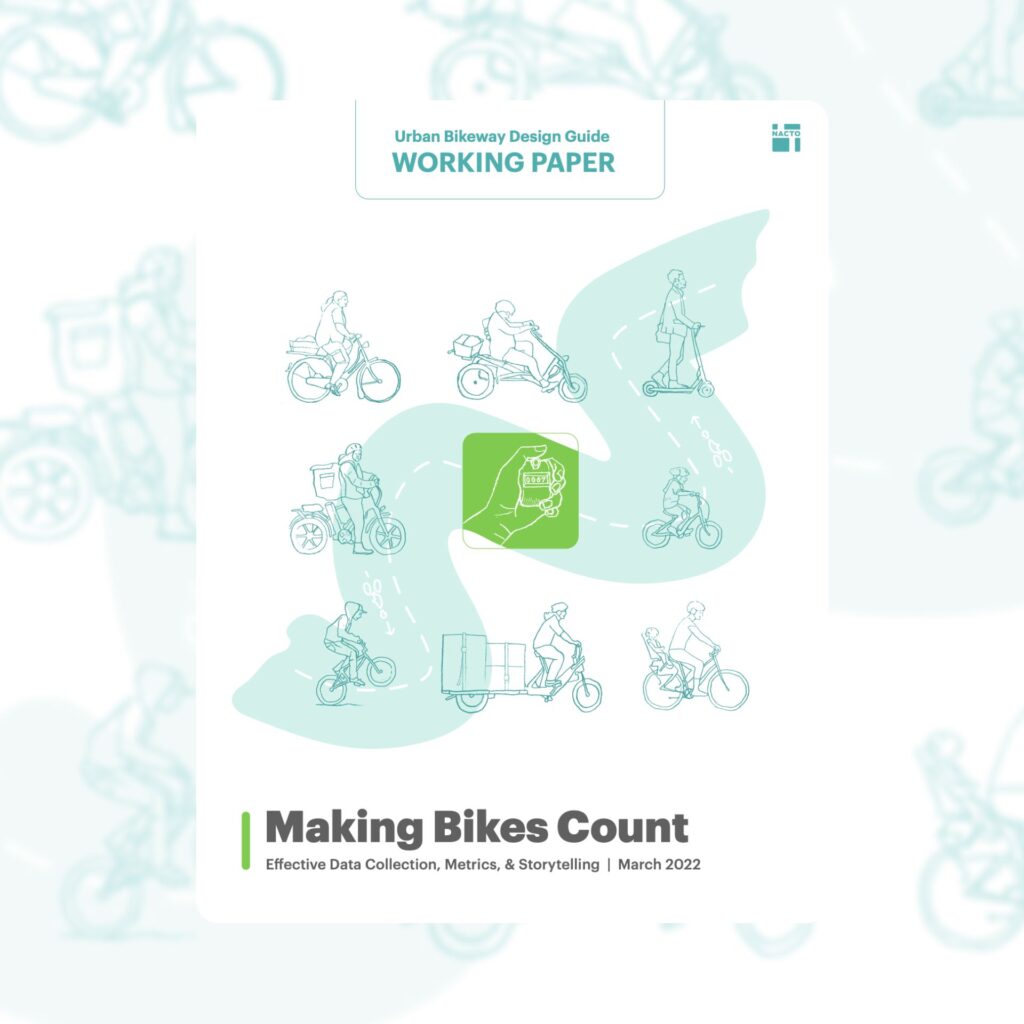
Practitioner Paper
Making Bikes Count: Effective Data Collection & Storytelling
This is a practical guide for practitioners building bike count programs, based on technical knowledge and best practices from cities across North America.
